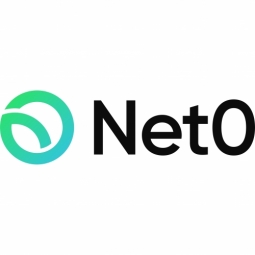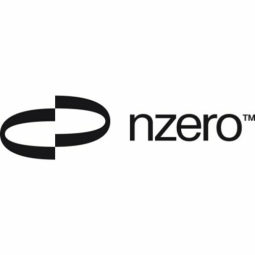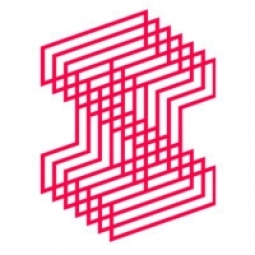Case Studies.
Add Case Study
Our Case Study database tracks 22,657 case studies in the global enterprise technology ecosystem.
Filters allow you to explore case studies quickly and efficiently.
Download Excel
Filters
-
(6,653)
- (2,601)
- (2,127)
- (945)
- View all
-
(5,642)
- (2,469)
- (1,692)
- (826)
- View all
-
(5,571)
- (2,178)
- (1,766)
- (643)
- View all
-
(5,247)
- (2,179)
- (1,715)
- (1,321)
- View all
-
(2,881)
- (1,448)
- (574)
- (376)
- View all
- View all 15 Technologies
- (1,985)
- (1,985)
- (1,915)
- (1,679)
- (1,629)
- View all 42 Industries
- (8,728)
- (4,742)
- (3,618)
- (3,233)
- (2,947)
- View all 13 Functional Areas
- (3,304)
- (2,787)
- (2,603)
- (2,006)
- (1,630)
- View all 129 Use Cases
- (13,581)
- (5,296)
- (4,272)
- (3,520)
- (2,856)
- View all 9 Services
- (504)
- (432)
- (416)
- (382)
- (301)
- View all 1083 Suppliers
Selected Filters

|
IoT in Action: Misfits Market's Climate Action through Food Waste Reduction
Misfits Market, an online grocer, is committed to making high-quality food more affordable and reducing food waste. The company is aware that 35% of food produced in the United States is wasted, contributing to a carbon footprint larger than that of the global airline industry. The challenge lies in sourcing and selling products that align with Misfits Market’s mission to reduce climate impact. This includes buying 'off specification' produce that is rejected by standard grocers for cosmetic reasons, such as size or discoloration, and selling products that are at risk of not finding a home due to reasons like nearing their expiration date or misprinted packaging. The company also aims to source products that promote better food systems, such as items with upcycled ingredients or those produced using regenerative agriculture.
|
|
|

|
Monzo's Journey to Carbon Transparency in Banking
Monzo, a modern, smartphone-based bank, has gained over 5 million customers since receiving their banking license in 2017. Their success is largely due to their commitment to transparency and control over finances. However, both customers and employees expressed a desire for more transparency in another area: climate impact. The financial sector was filled with glossy pamphlets and strong promises, but there was a lack of real data. Questions about what was driving the most emissions, what actions would really make a difference, and how much carbon was hidden in the industry’s blind spots remained unanswered. Monzo realized that to truly address these concerns, they needed a detailed and accurate understanding of the carbon emissions across their full value chain.
|
|
|

|
Okta's Climate Action: A Case Study on Corporate Sustainability
Sophia Gluck, the ESG and Sustainability Lead at Okta, faced the challenge of integrating sustainability into the company's operations. Okta, an identity management company, was in the early stages of its journey towards ESG and sustainability. The company needed to reduce the greenhouse gas emissions of its cloud service providers and engage its supply chain to set science-based targets. Additionally, Okta was facing increasing pressure from stakeholders, including investors, employees, and customers, to demonstrate its commitment to climate action. Investors were keen to understand Okta's ESG initiatives, employees wanted to work for a company taking action on climate change, and customers were increasingly inquiring about Okta's ESG programs.
|
|
|

|
Educate Online: Pioneering Carbon Neutrality in the Education Sector
Educate Online, a US-based learning platform established in 2018, faced a unique challenge as it expanded. The platform, which offers high-quality online and in-person education to children globally, found that its users - students and parents - were increasingly interested in sustainable practices and services. They wanted to contribute to improving the quality of life for future generations. To align with these values, Educate Online sought to become a carbon-neutral platform. However, they needed a method to calculate their users' carbon footprint accurately to offset it accordingly. The challenge was not only to measure and offset the carbon emissions but also to identify the primary sources of emissions within the company's operations.
|
|
|

|
Fenice Bulk Monaco's Journey to Achieve Net Zero with Net0
Fenice Bulk, a Monaco-based shipping company, is faced with the challenge of meeting upcoming regulatory changes in the maritime industry. The European Commission has proposed the inclusion of the shipping industry in the EU’s carbon market from January 2023. This move will necessitate shipowners to purchase permits covering their emissions within the EU and a portion of their emissions from international voyages starting and ending in the EU. Given that the shipping industry accounts for nearly 3% of the world’s CO2 emissions, these regulations are expected to push shipowners to collaborate with sustainable commodity trading companies to reduce their emissions and cut costs in future carbon credit trades. Fenice Bulk, with its green shipping approach, aims to be an early adopter in sustainable shipping services. However, this requires the company to expedite its decarbonisation journey.
|
|
|

|
Monaco Streaming Film Festival Achieves Carbon Neutrality with Net0 Partnership
The Monaco Streaming Film Festival (MSFF), despite its successful inaugural edition in 2021, faced a significant challenge in terms of its environmental impact. The event, which was held during a restrictive period in Monaco due to the global pandemic, attracted a large audience, leading to increased local emissions and pressure on ecosystems. The festival's founder, Tony Davis, noted the cleaner environment during the pandemic and was inspired to make a positive impact. With the 2022 edition expected to draw an even larger audience during Monaco's busy event season, the need to account for and mitigate the festival's environmental impact became a pressing concern.
|
|
|

|
Voltaware and Net0: A Partnership for Energy Savings and Carbon Reduction
The global surge in electricity prices has affected millions and created a pressing need for actionable insights to help businesses and households reduce energy costs and carbon footprints. The challenge lies in providing a comprehensive solution that allows businesses to monitor, reduce, and report their carbon emissions while maximizing energy efficiency and cost savings. The partnership between Voltaware and Net0 aims to address this challenge head-on. Voltaware's AI-driven insights and Net0's comprehensive carbon management platform are designed to provide users with the ability to track their energy use down to the appliance level, offering actionable insights into carbon reduction and optimizing energy spending.
|
|
|

|
Reno's Carbon Transparency Initiative: A Case Study
Reno, the largest city in Northern Nevada, is experiencing a rapid rise in temperatures, posing a significant threat to its community and natural attractions. In response, the city has prioritized sustainability, creating a robust 2019-2025 Climate Action Plan with the goal of reducing greenhouse gas emissions by 28% from 2008 levels by 2025. However, Reno faced challenges in implementing effective carbon reduction initiatives due to the lack of accurate data. Traditional tracking methodologies based on emissions averages did not provide the strategic and operational insights required to reach these targets. Additionally, the city was struggling to capture its entire carbon footprint, across scopes 1, 2, and 3.
|
|
|

|
Digital Transformation in Chemical Management: A Case Study of Valvoline Oil A/S
Valvoline Oil A/S, a family-owned company specializing in distributing lubricants to the automotive industry, was facing significant challenges in managing safety data sheets using a paper-based system. This method proved inefficient and ineffective, requiring substantial time and effort to maintain. The paper-based system also made it difficult to gain insight into all the chemical products located on site, leading to data silos that were hard to break down. The team had little visibility and found it challenging to find the information they needed, as it was scattered in different locations. Furthermore, distributing safety data sheets and updated SDS’s to their approximately 600 customers was a daunting task. Whenever there was a product update, the team had to print out all the necessary safety data sheets, carry them to the post office, and send them out in a timely manner. The team realized this method was not sustainable for the company or their customers, prompting them to look for an alternative.
|
|
|

|
IoT Implementation in Chemical Management: A Case Study of Wärtsilä and EcoOnline
Wärtsilä, a global leader in innovative technologies and lifecycle solutions for the marine and energy markets, was facing a significant challenge in managing and tracking the chemicals used across its various locations. The company, with over 18,000 professionals spread across more than 200 locations in 68 countries, lacked a comprehensive system to maintain an overall view of the chemicals and their risk assessments. The absence of a robust system made it difficult for the company to keep track of the chemicals, their suppliers, and the latest safety data sheets. This situation posed a risk to the company's commitment to improving environmental and economic performance.
|
|
|

|
Revolutionizing Sports Marketing: The 2018 FIFA World Cup and adidas
The FIFA World Cup is one of the most significant sporting events globally, and adidas, as the lead global agency, faced the challenge of standing out amidst the noise of other sports brands. The conventional approach of creating a celebrity-studded affair was not enough to make a significant impact. The challenge was to create compelling content that would 'own the internet' on the day of publishing and overshadow any mention of a rival brand. The content needed to resonate with the audience and create a significant social impact.
|
|
|

|
Innovative Sports Marketing Strategy: Beckham X Zidane for Adidas
Adidas, a leading sports brand, was looking to leverage the 2018 World Cup to enhance its brand visibility and engagement. The challenge was to create a compelling content strategy that would resonate with the global audience and extend Adidas' proposition, 'Creativity is the answer'. The brand aimed to demonstrate that creativity can inspire others, bring people together, and elevate individuals from humble beginnings to the world stage. The challenge also involved owning the internet on the day of publishing, which required a unique and engaging approach to content creation and distribution.
|
|
|

|
Adidas FW23: Overcoming Market Congestion with IoT
Adidas, in partnership with Iris, faced a significant challenge in launching their new range of outdoor apparel, TERREX, into a rapidly growing and congested outdoor market. The market was saturated with various products, brands, and sports, making it overwhelming for consumers who were expected to invest heavily in these individual pieces. The TERREX range was focused on a layering system, including Base Layer, Mid Layer, Insulation, and Outer Layer. However, the primary challenge was that consumers did not understand the concept of layering and its versatility. The target audience for this range was 18-35 year olds and anyone with a love for the outdoors.
|
|
|

|
Adidas' Transformation into a Credible Outdoor Brand: The 'United By Summits' Case Study
Adidas, a globally recognized sports and fashion brand, was facing a significant challenge in positioning itself as a credible outdoor brand. Despite having high-performance product lines in snow/ski, mountaineering, hiking, and trail running, it was not perceived in the same light as other established outdoor brands like North Face or Arcteryx. The primary challenge was to bring to life its new platform 'United By Summits' and position Terrex, an Adidas product line, as a credible outdoor brand. The task was to break away from the 'sea of sameness' in the outdoor category, which was characterized by similar visuals, narratives, and expectations, and to paint a realistic and inclusive portrait of the outdoors.
|
|
|

|
Building Player Hype through IoT: A Case Study on Adidas' World Cup 2022 Campaign
Adidas, a soccer-first sports brand, faced a significant challenge in the run-up to the World Cup 2022. The company aimed to make Weston McKennie, Gio Reyna, and Jesus Ferreira the most recognized athletes in the US Men's National Team (USMNT). However, in North America, Adidas' competitors were leading partners of the USMNT and several of their athletes. The challenge was to reach fans where they frequent most, which is social media, and extend the reach even further to inspire local communities. The goal was not only to increase the visibility of the athletes but also to engage new fans and the next generation.
|
|
|

|
Adidas Predator Edge: Breaking Stereotypes with IoT
Adidas, a globally recognized sports brand, has been launching its iconic football boot brand, the Predator, since 2002. However, the challenge in the recent launch was to break away from the traditional male-dominated narrative and spotlight the growing influence of women in football. The company recognized that women's football is filled with stereotypes and perceived impossibilities. The task was to shatter these stereotypes and position the Predator Edge boots as a change agent. The challenge also included ensuring that the campaign was largely made and run by female creators, a significant shift from the usual practice.
|
|
|

|
Race to Thrive: Alight's Innovative B2B Marketing Strategy
Alight, a new spinoff from a formerly well-known brand, faced the challenge of making a significant awareness push as their brand started to debut globally. The company was particularly focused on making an impact at industry conferences in Chicago, Las Vegas, and Barcelona. The key to their concept was their new brand promise, 'Reimagining the way people and organizations thrive.' The challenge was to bring this concept to life in a way that would resonate with their target audience and differentiate them from larger, more established competitors.
|
|
|

|
Alight Solutions: Tackling The Great Resignation with IoT
Alight, a leading provider of integrated benefits, payroll, and cloud solutions, faced a significant challenge in 2021. With new leadership and M&A in preparation for their IPO, the company was transitioning from selling HR products to adding value to the C-suite through a happier, healthier workforce. This shift was particularly crucial amid a global health crisis where the health, wealth, and wellbeing of workers became a top priority for every leader. The company aimed to address one of the most pressing problems of our time: The Great Resignation. However, reaching and influencing the C-suite, a total addressable market of 1.4 million, was a daunting task. The challenge was to create a bold, provocative campaign that would resonate with this audience and position Alight as a solution to the workforce crisis.
|
|
|

|
Parachute Home's Success with NetSuite Data Centralization
Parachute Home, a U.S.-based direct-to-consumer brand selling home essentials, was struggling to manage data from its two core systems, Shopify and NetSuite’s cloud ERP software. Shopify powered Parachute’s ecommerce platform and transactional process, while NetSuite triggered the fulfillment process. However, these systems were running in a siloed manner, making the data from both sides increasingly hard to manage. Parachute was using custom-built data loaders to connect into Shopify and NetSuite, but the results were inconsistent. There were data quality problems that resyncing rarely solved, and the absence of logs made it hard to identify issues. The time-consuming data ingestion process was hindering the brand's digital ambitions.
|
|
|

|
Paytronix Enhances Customer Engagement with Real-Time Data Science via Fivetran and Coalesce
Paytronix, a customer engagement platform for restaurants and small businesses, was facing a significant challenge in managing and deriving insights from its data. The company was dealing with data from multiple sources, running on various databases, and in disparate formats. The data ingestion tool they were using was unreliable and missed many transactions, leading to a lack of trust in the underlying data. Additionally, the company was using a mix of Scala and PySpark jobs for data transformation, which was custom code and handwritten. This toolset was unable to keep up with the growing demands of the business, and a lot of time was spent on maintenance and break-fix support. The company wanted to focus more on experimentation, but the existing system was not conducive to quick proof-of-concept testing and rapid iteration.
|
|
|

|
PopSockets Enhances Profitability and AOV by 25% with Fivetran
PopSockets, a retail and consumer goods company, was facing significant challenges with its data management and reporting processes. The company was struggling with reporting efficiencies and communicating insights across various departments, including Ecommerce, Marketing, Business Intelligence, Finance, Accounting, Supply Chain, and Operations. The lack of strict timelines for data refreshment and the tedious process of manually aggregating reports were hampering the company's growth. As PopSockets began to experience tremendous year-over-year growth and adopted an ERP system, the volume of data grew exponentially. The company was grappling with data silos, unscalable manual efforts to aggregate and store data in a single source of truth, and a lack of visibility into marketing data to understand the ROI of ad spend on various channels. PopSockets needed a scalable solution that would allow its small team of data engineers to build automated data pipelines for faster analytics and reporting.
|
|
|

|
PostNL's Successful Cloud Migration and Integration with Fivetran
PostNL, a mail, parcel, and e-commerce service provider in the Netherlands, United Kingdom, Germany, and Italy, decided to migrate its IT operations to the cloud to maintain its competitive edge and reduce costs. The company aimed to decommission its on-premises data centers and move its applications, infrastructure, and IT management to the cloud. The applications ran on Oracle and SQL Server, and where possible, PostNL wanted to replace existing bespoke software with Software-as-a-Service (SaaS). If a suitable SaaS replacement was not available, the company planned to implement the legacy and bespoke software on top of cloud-based infrastructure and platform services (IAAS and PAAS). PostNL initially chose the Microsoft Azure platform for these services and later added Amazon Web Services to avoid the risks of running its entire infrastructure onto a solution from a single vendor. The migration process, which took over two years, presented significant integration challenges. PostNL needed to move applications and data to the cloud, ensure the migrated applications continued communicating with the existing on-premises systems, and integrate various cloud environments.
|
|
|

|
Schüttflix's Digital Transformation with Fivetran in the Construction Industry
Schüttflix, a German logistics start-up, aimed to digitize the construction industry, a sector traditionally reliant on pen and paper. The company sought to disrupt local supply chains by connecting suppliers, carriers, and buyers through a digital B2B platform. The challenge was to enable data-driven decision-making to speed up transactions and reduce costs. Alexander Rupp, Head of Data and Business Intelligence, was tasked with building a modern data stack. He needed to identify connectors that could tap into key data sources quickly and reliably. The goal was to provide stakeholders with the best data to make informed decisions.
|
|
|

|
Snowflake's Comprehensive Data Stack Development with Fivetran
Snowflake, a leading data cloud company, was looking to centralize its data within the organization's Snowflake instance, ‘Snowhouse,’ to power segmentation models, recommendation engines, and ultimately build a 360-degree view of customers. The marketing intelligence team at Snowflake had a bold vision to predict real-time ROI to dynamically optimize all Snowflake marketing programs, disrupting legacy B2B marketing analytics practices, and create huge efficiencies. However, the company faced challenges in breaking down data silos and enabling efficient analytics. Snowflake used to keep its data modeling and transformation logic within a separate BI tool, which was time-consuming and prone to error. Every time the business needed to run models out of the tool, or conduct ad-hoc analytics, analysts needed to recreate their models from scratch.
|
|
|

|
SpotOn Accelerates Reporting with Fivetran Transformations for dbt Core
SpotOn, a rapidly growing software and payment company, faced significant challenges in efficiently transforming their captured customer transaction data into fast, reliable, and informative reporting for their clients. As the company scaled, the complexity of turning data into reporting for customers and internal stakeholders increased, with client data scattered across 30 unconnected MySQL databases. The engineering team lacked a central repository for efficient reporting generation. The existing data transformation process using stored procedures in Snowflake became increasingly complex and resource-intensive, with over 2,000 lines of code behind a single table. Changes were not automatically monitored or logged without version control, making quality assurance time-consuming and scaling required writing code from scratch for each new use case. This resulted in high costs, resource-intensive processes, and suboptimal results, impacting the company's ability to scale quickly to meet growing customer needs.
|
|
|

|
Fivetran's Role in Accelerating Covid-19 Testing for Non-Profit Organisation
Testing for All, a UK-based non-profit organisation, was launched to provide mass Covid-19 testing at a low cost. The organisation aimed to deliver 5,000 high-quality Covid-19 tests a day at half the price of other services. However, they faced a significant challenge in managing personal data, medical test results, and biological samples while maintaining a prompt and user-friendly service at scale. The process involved a six-step procedure, starting with registration and dispatching a test kit, and ending with receiving lab results. The organisation needed a privacy-centric technology stack that could handle the complexity of the process and ensure speed and efficiency in both the eCommerce part (signing up and ordering the kits) and the science part (the labs providing a range of swabbing techniques).
|
|
|

|
Untitled's Data Centralization and Efficiency Enhancement with Powered by Fivetran
Untitled is a company that is building a platform to help its clients leverage data across departments. The company's data products enable non-technical staff to derive key insights, leading to increased revenue, decreased operating costs, and the development of sophisticated AI and ML capabilities. However, the traditional process of building data pipelines, which is crucial for transferring data from one point to another, was proving to be a significant challenge. This process was time-consuming, accounting for as much as 44% of data engineers’ time, and was hindering the rapid development of their platform.
|
|
|

|
Wallbox Enhances Business Operations with Unified Data via Fivetran
Wallbox, an electric vehicle charging and energy management company, faced a significant challenge in managing its data. Since its inception in 2015, the company experienced rapid growth, expanding from 50 to over 1,000 employees in a short span of time. This growth led to an increase in the number of tools and applications used across different departments, resulting in data silos that hindered insight and quality control. The company's data was scattered across various platforms, making it difficult to trace and resolve quality issues. Additionally, the business logic embedded in the dashboard was complex to evolve. Another challenge was the regular updating of tools required for custom integrations, which proved to be a costly and time-consuming process. Wallbox needed a solution to break these silos and consolidate all its data in a single, easily accessible location.
|
|
|

|
Westwing Enhances Marketing ROI and Customer Engagement with Fivetran
Westwing, a leading European eCommerce company, was facing challenges with its outdated technology stack and inefficient data architecture. The company recognized the importance of integrating data in a centralized location, but the manual work on their on-premise architecture was becoming increasingly time-consuming. To integrate with each different data source, every line of code had to be programmed with Python. This was slowing down the company's growth and preventing it from achieving a holistic view of the business. Westwing decided to move its architecture to the cloud, with Snowflake as the data warehouse, and outsource commodity services to focus on its strategic goal of scaling an eCommerce platform. However, with an ambitious cloud migration deadline looming, Westwing needed to find an ELT solution that could quickly and efficiently automate access to data.
|
|
|

|
Belcorp's Transformation: Creating a Data-Driven Culture with IoT
Belcorp, a leading beauty and cosmetics company in Latin America, was facing a challenge in its business intelligence model. The company was struggling with a high demand for business cases and was seeking solutions to empower its business areas and generate immediate responses to questions that previously took weeks to address. The traditional BI model was not serving the company's needs, and there was a need for a tool that could introduce the Self Service BI concept at Belcorp. This was part of the digital transformation initiated by the company's CTO & CDO, Venkat Gopalan. The company was also looking to involve its business areas in the selection of the new BI tool, a first in the company's history.
|
|




